Chinese mango pudding is one of the favorite Chinese desserts served in Chinese restaurants and Chinese dessert houses.
Read on to find out how I make my version of Dim Sum style Mango Pudding in this article.

My journey to find the best mango pudding recipe
I ordered a few mango puddings at different local restaurants before deciding to give it a try. Every one of them has its uniqueness. I want to sum up those good criteria for making this popular dessert- the texture of the just-set gelatin, light as a feather, full of mango flavor, and melt-in-the-mouth. This set of criteria immediately turns an easy recipe into a daunting task.
So I carried out a series of tests this week to find the best ratio of ingredients required, the right type of mango, the amount of gelatin to form the ideal texture, and the techniques to make it smooth and silky.
I hope this article is useful for you if you plan to make a good quality Hong Kong style Mango Pudding.
Let’s dive in and take a look at the step-by-step instructions.
Note: This post may contain affiliate links. Please read my privacy policy for more info. I may receive commissions for purchases made through links in this post. As an Amazon Associate, I earn from qualifying purchases.
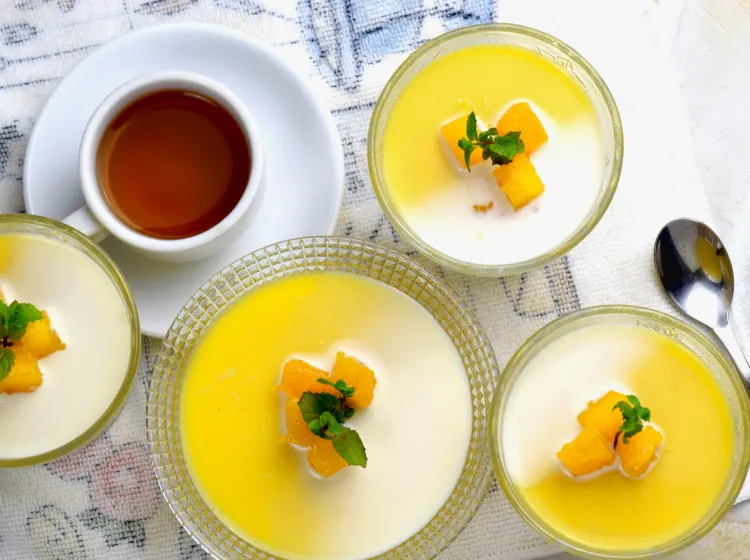
1. My ideal Mango Pudding
First, let me describe how is the ideal mango pudding in my mind:
- Melt-in-the-mouth silky finishing
- The pudding has a strong mango flavor without an artificial flavoring agent).
- Smooth texture
- Clean finishing with a shiny surface like a mirror,
- It is tender and soft, firm enough to hold its shape, but breaks when poked with a spoon.
- Attractive presentation
2. Choose the best mango for the mango pudding.
This mango pudding should be bursting with a luscious mango flavor with no artificial flavor. As such, I tried a few mango species (dragon, Falan, R2E2, and Folgen Water Lily Mango) and eventually decided to use the Dragon Mongo from Thailand.
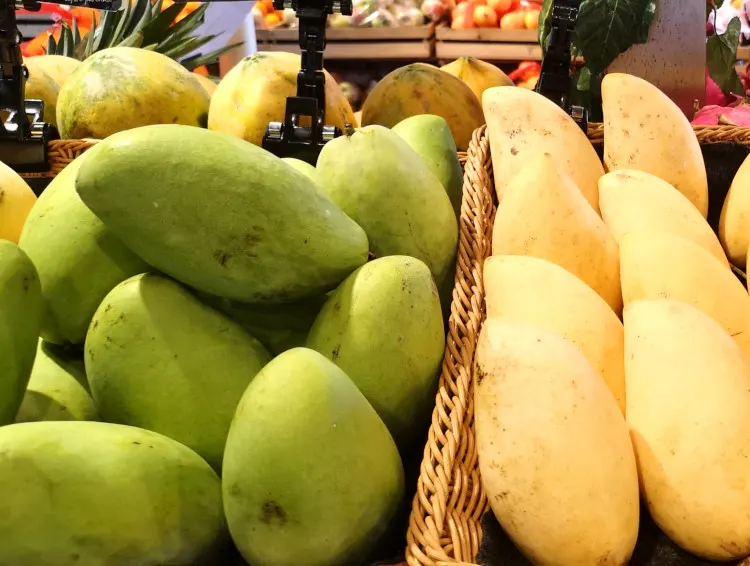
You may want to choose from the species of mango available where you are. Certainly, it will be likely different from what I used. However, the following guideline applies.
Guideline to choose the best mango for the pudding :
- Choose the sweet mango. Get assistance from the shop assistant to suggest one.
- The mango should be slightly past ripe. The skin may have some black speck and feel somewhat soft but not mushy when touched.
- It may have a little sticky sap leaking on the surface. It may not appear the best, but it produces the sweetest puree.
- Ask the shop assistant to suggest the type of mango with less fiber. We want the pudding to be smooth, creamy, and free from fiber.
If it is not the mango season and you want to enjoy the pudding, you can use the frozen mango or the canned mango cubes. Certainly, the flavor will not be as good as the ripe and fresh mangoes.
Since the entire process of making the pudding does not involve boiling the ingredients, it is crucial to keep the utensils clean. The pudding will turn moldy much sooner if the utensil is contaminated. Therefore, I suggest using hot water to rinse all the bowls before making the pudding.
3. Make the mango puree
Following these steps:
- Cut the mango into two large slices, leaving the pith at the center. Use a knife to cut crisscross on the flesh to make some dice. Keep aside the mango chunks.
- Remove the remaining flesh and the pith from the skin. The easiest way to remove the flesh is to scrape the flesh from the skin and the pith with a metal spoon.
- Place the flesh in a food processor or blender. Add some water and blend the mango to form a smooth mango pulp.
- Blending the mango flesh with water can produce a smoother puree than blending the flesh alone.
- Pour the pureed mango through a fine sieve or wire mesh strainer. Use the back of a metal spoon to press the puree against the strainer so that the puree will pass through the sieve/strainer.
The sieving process will remove most of the fiber from the mango. This step is essential to ensure the pudding has a smooth texture.
4. Add the cream and milk
Add the heavy cream and milk to the puree. This step is similar to how I make the Pandan pannacotta in our restaurant. Stir it and pour the milk mixture into the food processor.
The amount of milk and sugar can be varied. If you prefer a less creamy texture, reduce the cream and substitute it with milk or water. I have reduced the amount of cream because the original prototype is too heavy on me.
Note: Full-fat coconut milk is a good substitute for regular milk if you prefer the taste of coconut. Also, some recipes use sweetened condensed milk, which is too sweet for me.
Note: You can also consider adding a small amount of lemon juice to accentuate the flavor.
5. The best way to dissolve the sugar and gelatin
Follow these steps:
- Dissolve the gelatin. Add the gelatin sheet (or powder) to cold water. If you add the gelatin directly to hot water, it will easily form lumps. Give it a few stirs. Let it sit for three to five minutes to bloom or hydrate. There should not have been any noticeable lumps by now.
- Now, add the sugar to the bloomed gelatin. The amount of sugar in this recipe is on the sweeter side. Reduce the amount if you prefer a less sweet version. Heat it slowly to dissolve the sugar.
- Since the gelatin will dissolve above 37°C, it will dissolve first when the temperature increases, and the sugar will dissolve at a higher temperature. Once the sugar is dissolved, remove it from heat.
- Do not heat up to a near boiling point, as boiling can destroy the ability of gelatin to set.
The optimum amount of gelatin
The Bloom value measures the ability of the gelatin to set. Generally, most available gelatin has a Bloom value between 30 to 300. I am using the gelatin powder with 200 Bloom in this recipe. Since you may not use the identical gelatin that I use, the amount in the creamy mango pudding recipe is only for your reference. If you are using the gelatin with the 200 Bloom, too, chances are you will more or less get the just-set texture. If not, you may need to take some trial-and-error test batches for the best result.
The amount of gelatin required also depends on how firm you want the pudding. I use 2% of gelatin for this recipe for a softer pudding. This means 2g of gelatin for every 100g of ALL the ingredients combined. I am looking for a barely set pudding with an alluring wobble texture when you shake it, yet firm enough to let the mango cubes stud in it.
Use 3% if you want to make a firm pudding.
Note: You can use agar agar strands (or agar agar powder) as the alternative to gelatin. The texture will be firmer than using gelatin.
Bear in mind that mango has protease, an enzyme that can destroy the setting ability of gelatin. You may think a slightly higher percentage of gelatin is required than other fruit puddings to achieve the same hardness.
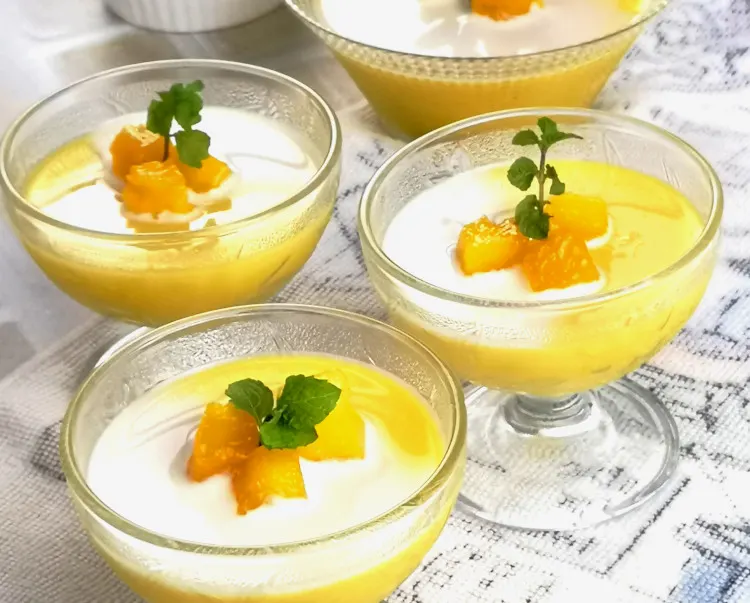
6. Combine the mango mixture with the gelatin mixture
Do the following-
- Pour the gelatin/sugar mixture slowly into the fresh mango puree. Keep stirring but not too vigorously to avoid creating too many bubbles.
- Once the mixture is well combined, pour it through the strainer for the second time.
Why do I want to strain it for the second time? First, it will remove any lumps of gelatin (if any) and catch any fiber that might seep through the first round of straining.
Secondly, it breaks the bubbles (if any), so the final mixture has a clean and shining surface.
7. Pour into the molds (Beautiful glassware is the best)
- Place some mango cubes in the molds (Get some nice-looking glassware for pudding.)
- Fill up the molds with the mixture.
- Use the tip of a folded kitchen tissue to break the bubbles if there are.
- Cover with cling film or plastic wraps and chill for at least two hours or until the pudding is set.
8. The final touch
Before you serve, add a small amount of evaporated milk, just enough to form a thin layer to cover the surface of the pudding. You can also use coconut milk to replace the milk for a change.
Add more mango cubes to the surface. Decorate with fresh mint leaves to serve this delicious mango pudding. Cover it with a plastic wrap or cling wrap and place it in the chiller for storage.
The Silky Mango Pudding Recipe

The Mango Pudding recipe
This recipe is the Chinese style mango pudding popular in Dim Sum store.
Ingredients
For the puree mixture
- 150 g mango puree
- 60 ml cold water
- 20 ml Heavy cream
- 40 ml milk
For the gelatin mixture
- 8 g gelatin, (2% of the total weight)
- 60 g sugar
- 80 ml water
For garnish
- Mango cubes
- Coconut milk
- Fresh mint leaves
Instructions
- Cut the mango into the half. Use a knife to cut criss-cross on the flesh to make some dices.
- Keep it for the subsequent step.
- Remove the remaining flesh from the skin and the pit.
- Place the mango flesh in the blender. Add the water as in the recipe. Blend the mango until it becomes a smooth puree.
- Pour the pureed mango through a wire mesh strainer. Use the back of a metal spoon to press and stir lightly so that the puree will pass through the strainer.
- Add the cream and milk to the puree.
- Put cold water in a small pan.
- Dissolve the gelatin in the cold water.
- Let it sits for five minutes to allow it to bloom.
- Now add the sugar into the Bloomed gelatin. Heat it slowly until the sugar dissolved. Remove from heat.
- Pour the gelatin mixture slowly into the mango puree mixture.
- Pour it through the strainer for the second time.
- Place some mango cubes in the cup.
- Fill up the molds with the mixture.
- Use the tip of a folded kitchen tissue to break the bubbles.
- Cover with cling film and chill for at least two hours or until the pudding is set.
- Add a teaspoon of milk (or coconut milk) on the pudding.
- Decorate with more mango cubes and mint leaves.
Recommended Products
As an Amazon Associate and member of other affiliate programs, I earn from qualifying purchases.
-
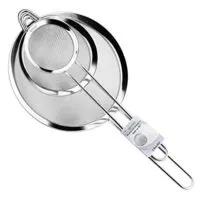 IPOW IP01115 Stainless Steel Fine Tea Mesh Strainer Colander Sieve with Handle for Kitchen Food Rice Vegetable, Set of 3
IPOW IP01115 Stainless Steel Fine Tea Mesh Strainer Colander Sieve with Handle for Kitchen Food Rice Vegetable, Set of 3 -
 Libbey Just Desserts 17-piece, Mini Coupe Bowl Set
Libbey Just Desserts 17-piece, Mini Coupe Bowl Set -
Amazon Brand - Presto! Flex-a-Size Paper Towels, Huge Roll, 12 Count = 30 Regular Rolls
-
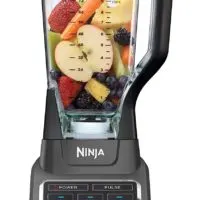 Roll over image to zoom in Ninja Professional 72oz Countertop Blender
Roll over image to zoom in Ninja Professional 72oz Countertop Blender
Nutrition Information:
Yield: 3 Serving Size: 1Amount Per Serving: Calories: 406Total Fat: 20gSaturated Fat: 16gTrans Fat: 0gUnsaturated Fat: 2gCholesterol: 9mgSodium: 92mgCarbohydrates: 58gFiber: 4gSugar: 44gProtein: 7g
This data was provided and calculated by Nutritionix on 6/16/2019

One-Pot Chicken Stew: A Flavor-Packed Meal (Chinese Style)
Saturday 15th of March 2025
[…] Mango Pudding […]
Irresistible Mango Dessert Recipes for Every Sweet Tooth
Sunday 29th of December 2024
[…] Mango pudding recipe- an easy Hong Kong-style dessert – https://tasteasianfood.com/mango-pudding/ […]
Easy Simple Mango Pudding Recipe
Friday 29th of November 2024
[…] Mango pudding recipe- an easy Hong Kong style dessert – https://tasteasianfood.com/mango-pudding/ […]
Shrimp fruit salad (Chinese style) recipe with mayo dressing
Monday 19th of August 2024
[…] Cantonese mango pudding […]
Jacky
Wednesday 17th of November 2021
Hi, do you think I could use cornstarch instead of gelatin? If so, how much cornstarch would you recommend me to use?
KP Kwan
Saturday 20th of November 2021
I have not tried using cornstarch without gelatin, so I really cannot provide an answer :). I try, I would likely use 30g of cornstarch to replace the gelatin in this recipe, However, if it works, the texture will be very different.